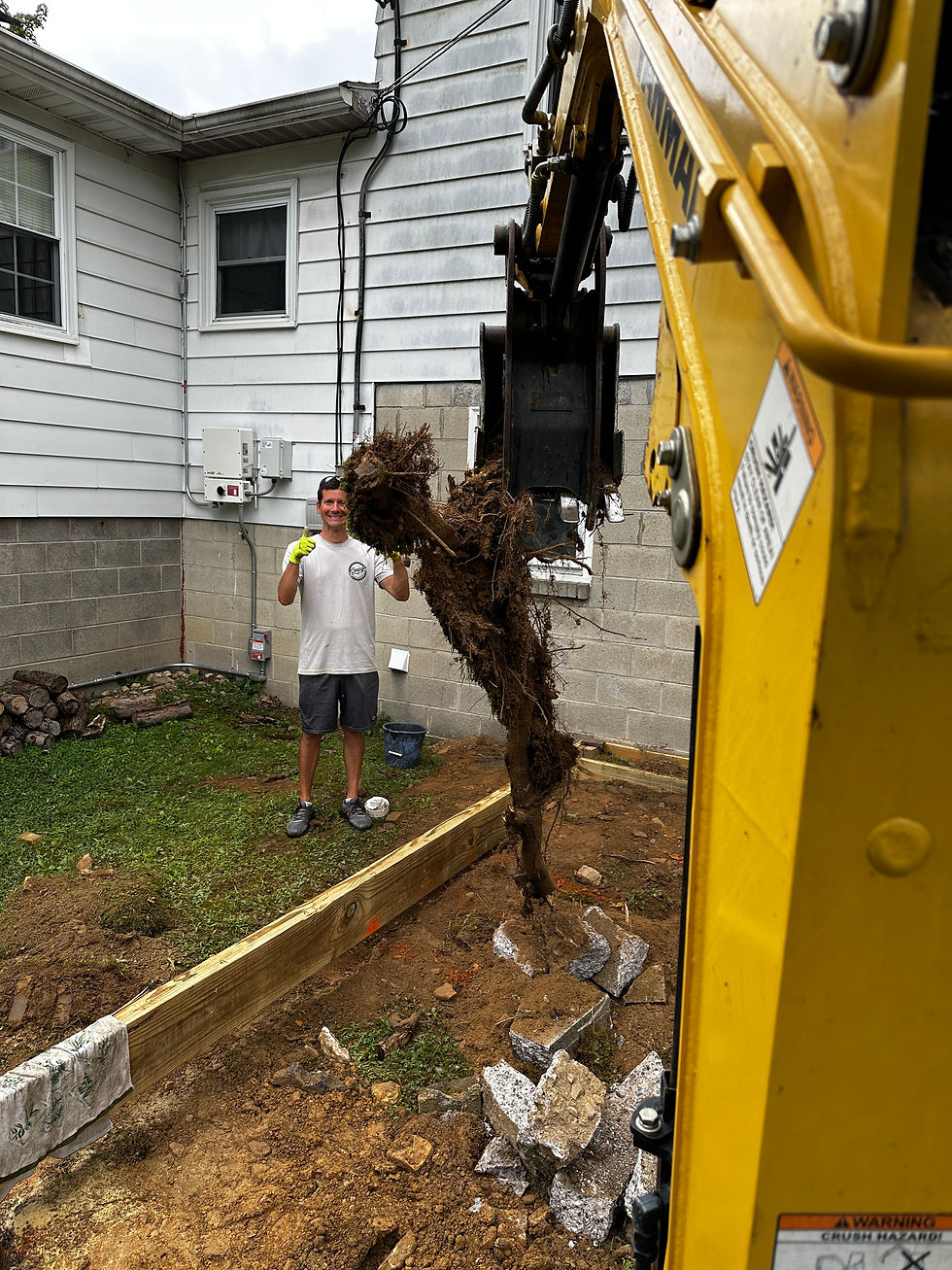Why Ground-Level Decks Aren’t Always Easier (or Cheaper) to Build
- Michael Smego
- Sep 17
- 3 min read

When most people picture a deck, they imagine it sitting a few feet above the ground with stairs leading down to the yard. But what about a ground-level deck — one that’s built close to the earth, with no steps at all? Many homeowners assume these should be the simplest (and least expensive) decks to build.
The reality? Ground-level decks come with their own set of unique challenges. If they aren’t built correctly, they can lead to drainage issues, rot, and structural problems that shorten the life of your investment.
At Smego Construction, we’ve built both ground-level and elevated decks across Central PA, and here’s what homeowners need to know.
The Hidden Challenges of Ground-Level Decks
Drainage and Moisture Control
Decks close to the ground don’t get much airflow underneath. That means water can linger around the framing, leading to rot or mold if the site isn’t properly prepared.
Extra attention has to be given to grading, gravel base layers, and sometimes even drainage systems.
Framing Adjustments
Standard deck framing is usually built on tall posts, which allows plenty of room to work beneath. On a ground-level deck, we’re working much tighter to the soil.
That means more labor-intensive digging, leveling, and handling of joist spacing to ensure everything stays dry and solid.
Excavation
Oftentimes, ground level decks require extensive excavation to make the projects possible. Properly framed ground level decks still require 2x8, 2x10, or even 2x12 joists which requires regrading or hand trenching (ugh!) prior to construction.
Additionally, soil conditions like roots, rocks, and debris can present additional challenges
Material Longevity
Code and Permit Requirements
Even if your deck is just inches off the ground, many municipalities still require permits, inspections, and code compliance.
Local building codes often dictate minimum clearance, footing requirements, and guardrail rules — even when homeowners assume a permit won’t be necessary.
Why Ground-Level Decks Still Make Sense
Despite these challenges, ground-level decks can be an excellent choice:
Easy Accessibility – Perfect for families who want a smooth transition from inside to outside with no steps.
Aesthetic Appeal – A low deck can look sleek and integrated into landscaping, almost like an extension of a patio.
Cost Benefits in Certain Cases – While they’re not always cheaper, eliminating tall posts, railings, and long staircases can reduce some costs.
Our Approach
When we design and build ground-level decks, we:
Install proper drainage and base layers to keep moisture away.
Excavate or regrade the area to allow proper framing
Adjust framing and joist spacing for long-term durability.
Still build on solid, full depth footers
Recommend materials based on the site conditions and homeowner’s goals.
Handle all permitting and code compliance so you don’t run into surprises.
Final Word
Ground-level decks might seem simple at first glance, but they demand careful planning and expert craftsmanship to last. Cutting corners at this stage can mean costly repairs down the road, or even a failed project.
At Smego Construction, we help Central PA homeowners build decks that look great, perform well, and stand the test of time — whether they’re low to the ground or two stories up.
Thinking about a ground-level deck? Reach out today and we’ll walk you through your options with honest pricing and clear guidance. In the meantime, read about one of our most challenging ground level builds here.



Comments